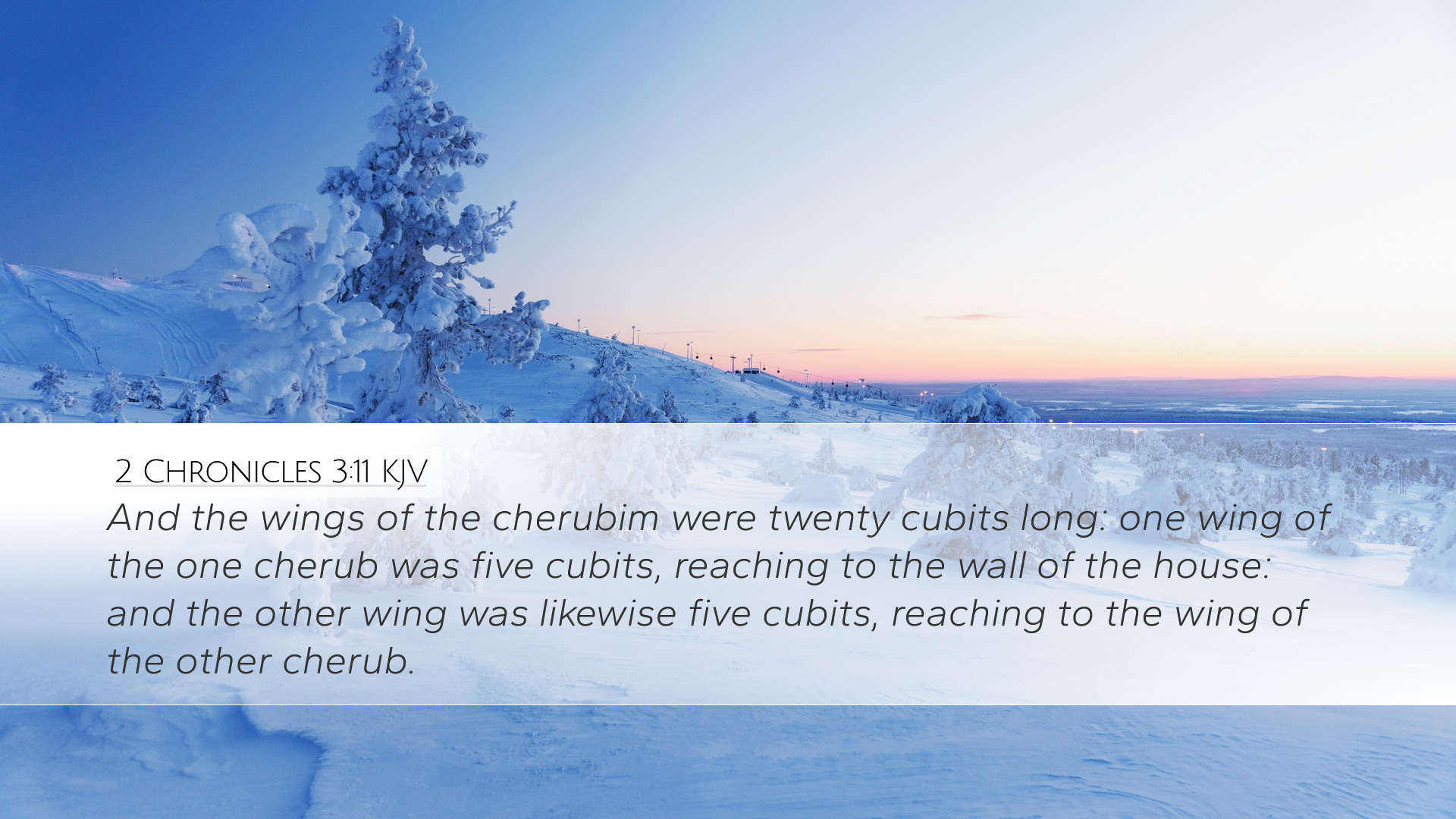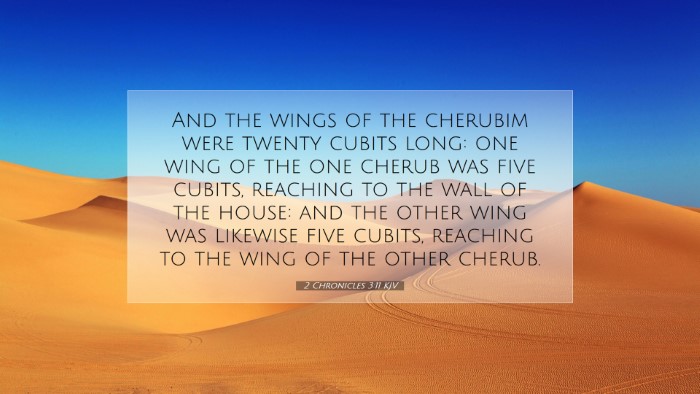Commentary on 2 Chronicles 3:11
Bible Verse: "And the wings of the cherubims were twenty cubits long: one wing of the one cherub was five cubits, touching the wall of the house; and the other wing was likewise five cubits, touching the wing of the other cherub." (2 Chronicles 3:11)
Introduction
The construction of Solomon's Temple is a profound event in biblical history, representing not only architectural grandeur but also deep theological significance. In this commentary on 2 Chronicles 3:11, we delve into the description of the cherubim, which holds symbolic importance in expressing God’s presence and glory.
Contextual Background
In the broader narrative of Chronicles, we see that the books emphasize the importance of worship and the centrality of the temple in Israel's relationship with God. Solomon's Temple is often described as the place where God chose to dwell among His people.
Historical Insights
As noted by Matthew Henry, the Temple's design, especially the cherubim, was a continuation of the vision given to Moses regarding the Tabernacle. The cherubim represented the guardians of the divine presence, echoing the imagery from Genesis where cherubim are placed at the east of the Garden of Eden to guard the way to the Tree of Life.
The Significance of the Cherubim
The cherubim described in this verse are majestic figures that signify protection and the holiness of God. As explained by Albert Barnes, the dimensions and positioning of the cherubim within the temple reflect their role as mediators between God and humanity. Their large wingspan of twenty cubits emphasizes the vastness of God's glory and His involvement in the sanctuary.
The Wings of the Cherubim
Details from the Commentary:
- Length and Placement: The wings’ span ensures that they overshadow the mercy seat, which is central to the atonement and divine forgiveness offered in the temple.
- Symbolism: The cherubim symbolize both God’s mercy and His judgment. Their presence in the Holy of Holies reminds the worshipers that they approach a holy God.
- Spiritual Implications: Their wings touching both the walls and each other signifies unity and the connection between divine realms and earthly believers.
Theological Reflections
According to Adam Clarke, understanding the cherubim’s role invites us to reflect on our access to God through Christ. The New Testament speaks of believers being able to enter the Holy of Holies by the blood of Jesus (Hebrews 10:19-20). Thus, the imagery of the cherubim foreshadows Christ’s ultimate sacrifice that allows us to commune with God.
The Nature of Divine Presence
As we examine this scripture, we must recognize the significance of God’s presence in the temple. The cherubim, with their protective wings, illustrate a multifaceted understanding of God’s interaction with mankind—God is both transcendent and immanent. The details around their construction and place provide a visible reminder of how God desires to dwell among His people.
Application for Today
For pastors, theologians, and students of the Word, this verse encourages a deeper appreciation for symbolism in worship spaces. It challenges us to consider how we honor God's presence in our worship and community life. The intimate connection represented by the cherubim calls believers to a greater awareness of God's majesty and holiness.
Conclusion
The depiction of the cherubim in 2 Chronicles 3:11 serves as a rich source of contemplation regarding God’s nature, the holiness required for worship, and the profound implications of access to His presence. As we reflect on such passages, we are reminded that our approach to God, much like the ancient Israelites, should be rooted in reverence and awe, recognizing the beautiful yet terrifying glory of the Almighty.
Further Study Recommendations
- Examine the role of the Tabernacle and the Temple in Israel's worship and how it informs contemporary practices.
- Study the New Testament's presentation of Christ as the fulfillment of the temple's sacrificial system.
- Consider personal applications of what it means to dwell in God's presence through prayer and worship today.


